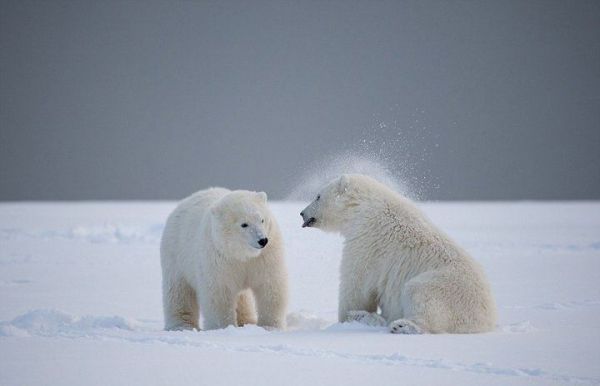
1. February 27th every year is the “International Polar Bear Day”.
2. The Latin word for polar bear is "ursus maritimus". Translated, ursus means "bear" and maritimus means "of the sea."
3. These beautiful polar bears can be seen in North America and Eurasia. Most of them live in the polar regions north of the Arctic Circle.
4. Some polar bears have been found traveling south to Alaska and Canada's Hudson Bay.
5. Although they will enter 199 kilometers inland from the coastline, in winter, most of them live near the coastline or on the ice.
6. As the seasons change and the ice melts, they will migrate within their own individual "activity range". This activity range usually ranges from 129,499 square kilometers to 349,648 square kilometers.
7. In a year, a polar bear travels an average of more than 2,896 kilometers to hunt for food.
8. When traveling on the ice, polar bears can jump over cracks up to 5.8 meters wide.
9. Polar bears are the only bears that can be considered marine mammals because they spend most of their time on sea ice.
10. Their skin is actually black. They look white because their hair is translucent, and the reflected light makes them appear white.
11. Their foot pads are covered with hair, which not only keeps them warm but also prevents them from slipping.
12. When in the water, polar bears can swim at a speed of 9.6 kilometers/hour.
13. Polar bears can swim for hours or even days. Many people think this is impossible because it is not a fish, but because of their wide feet, they can use their front feet as paddles and their back feet as rudders to control direction. This allows them to conserve their energy and swim for a long time without getting tired.
14. Although they spend half of their time hunting, their success rate is very low, less than 2%.
15. Their main prey include seals, bearded seals, and smaller animals such as birds. When necessary, they will also plunder some animal carcasses, eggs and plants to satisfy their hunger.
16. Polar bears are considered "hypercarnivore", which means that their diet consists of more than 70% meat.
17. Have you ever heard of the Grolar bear or the Pizzly Bear? Discovered during genetic testing in 2006, this breed is a hybrid of North American grizzlies and polar bears.
18. Only polar bears can give birth to these hybrid babies. Their living habits are the same as polar bears, but their fur is brown.
19. As of now, there are about 26,000 wild polar bears, which are divided into 19 subpopulations. Unfortunately, only one subpopulation is showing an upward trend, five subpopulations are stable, four are declining, and the status of the remaining nine is unknown.
20. The average weight of a male polar bear is equivalent to 10 adult males, about 800 kilograms.
21. Polar bears can grow up to 3 meters in length, making them the largest terrestrial carnivores in the world.
22. Female polar bears are about half the size of males.
23. Polar bears have a very sensitive sense of smell and can smell prey 1 kilometer away. They use this sense to locate the seal's breathing holes on the ice.
24. Polar bears will find the seal's breathing hole, wait there, and attack when the seal comes up to breathe. This is also known as "sneak hunting."
25. Polar bears can detect the presence of seals in the water, even if there is 3 feet of snow above the ice.
26. They can be very quick if necessary. When hunting by surprise, they can pounce on prey from 15 to 30 meters away, and can reach speeds of 40 kilometers per hour.
27. Tragically, polar bears are one of the first species to be threatened by climate change, with their populations expected to decline by 30% by 2050.
28. There are many modern techniques for tracking animals, but in recent years WWF has discovered that polar bear DNA can be collected from paw prints left in the snow. In just a few steps, SPYGEN's DNA experts can isolate polar bear DNA from the snow.
29. Polar bears are the only bears that do not hibernate during the winter unless they are pregnant. Sometimes, if the weather is extremely cold, they will dig a nest and hibernate temporarily. This is also known as Carnivore lethargy.
30. The largest polar bear on record was discovered in northern Western Alaska in 1960, weighing an astonishing 1,002 kilograms.
animal tags: bears mammals carnivora
We created this article in conjunction with AI technology, then made sure it was fact-checked and edited by a Animals Top editor.